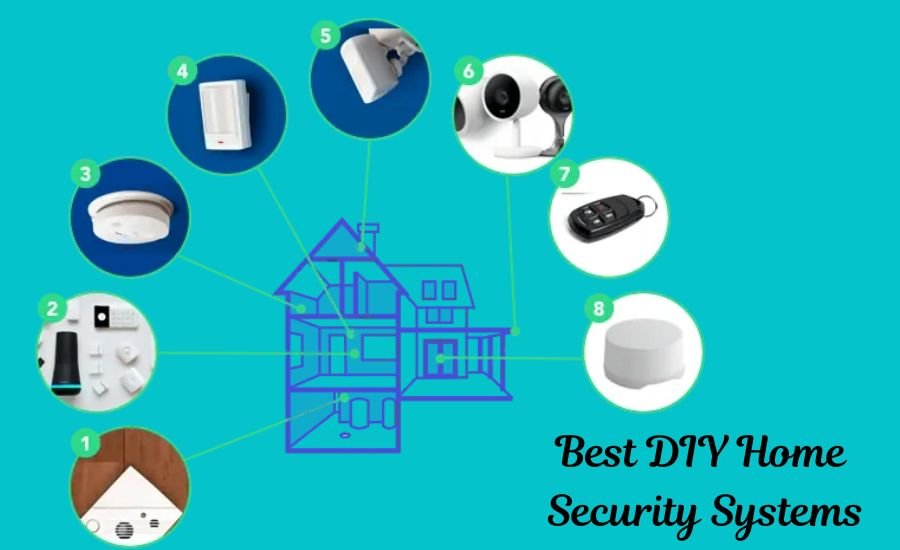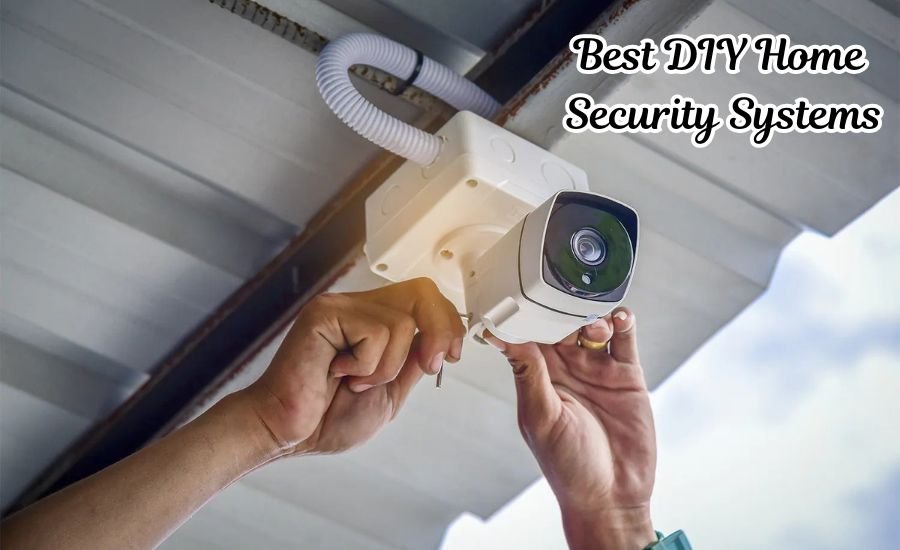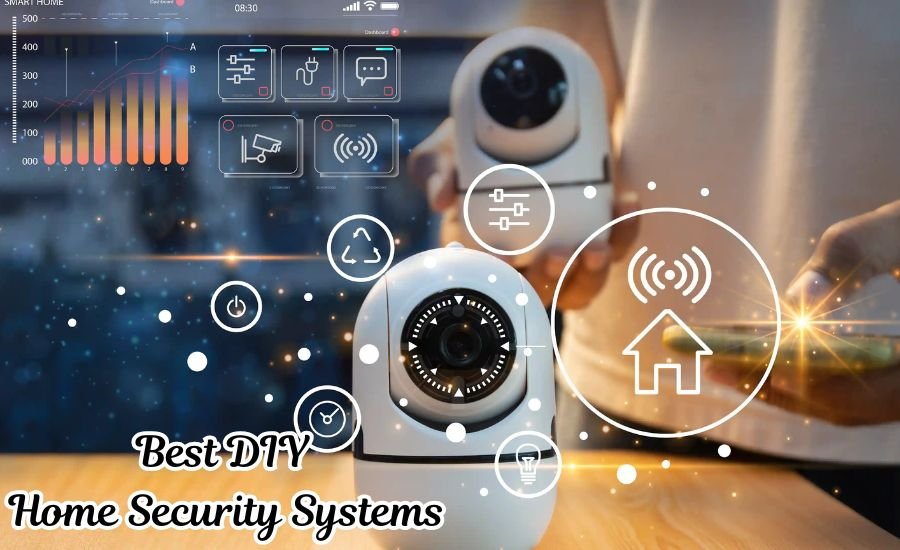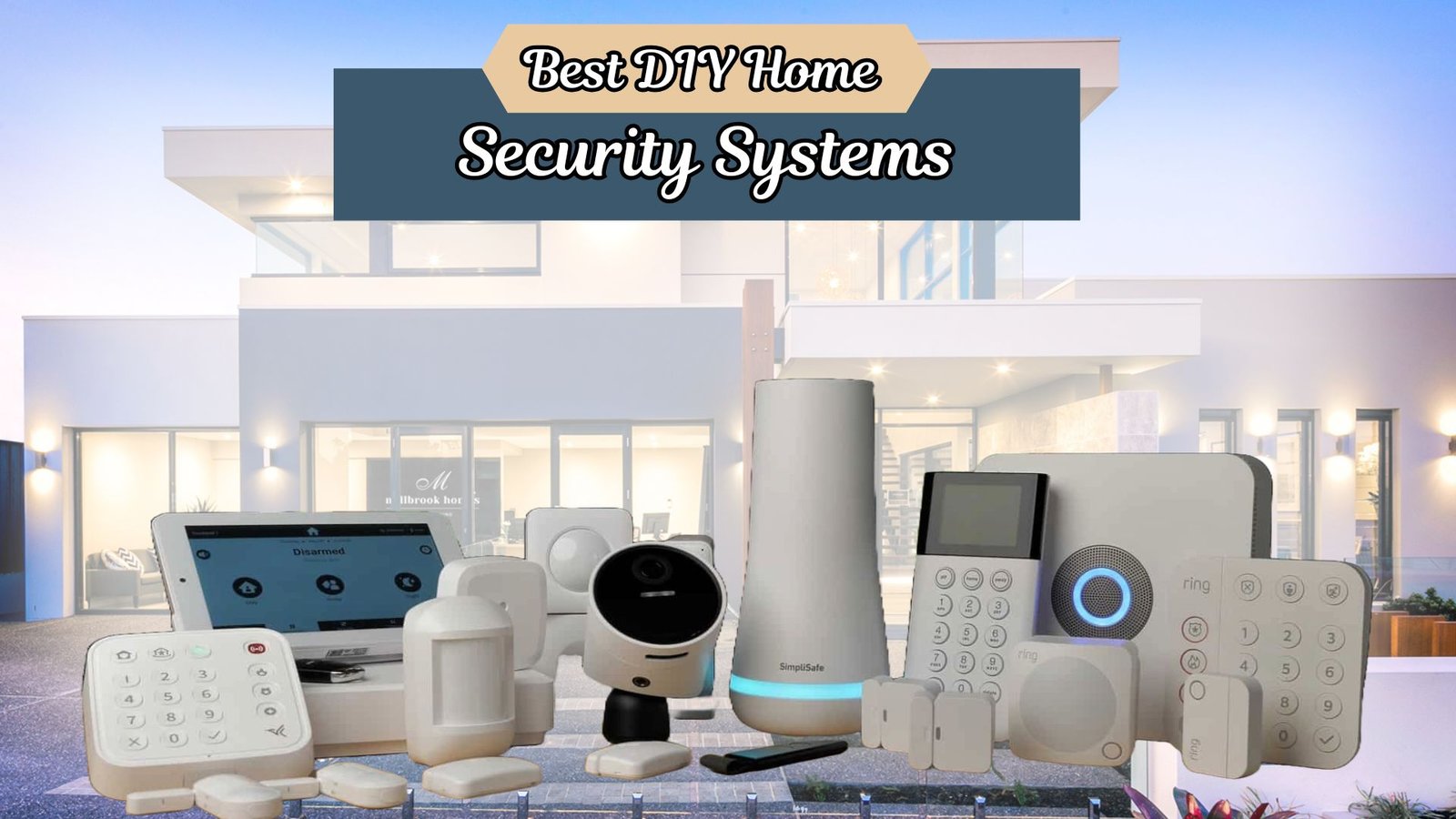Best DIY home security systems make home safety a top concern, and thanks to advances in technology, top DIY security solutions are now more accessible than ever. In contrast to traditional security solutions the DIY ones let homeowners install and manage their security systems without the assistance of a professional. They are equipped with advanced technology, app-based mobile control, and a variety of customizable features. If you’re budget-conscious or searching for the best security solutions, best DIY home security systems provide flexibility, value as well as ease of use. This article will assist you to discover the most effective solutions to secure your property efficiently.
Why Choose a DIY Home Security System?
Best DIY home security systems provide many advantages that make them popular among homeowners. They are first of all economical because they don’t require charges for installation. They are generally wireless, which reduces the requirement for drilling holes or wiring your house.
They also offer customisation by letting you choose sensors, cameras and alarms based on your requirements. Another benefit is that you can monitor the security via mobile apps that provide immediate updates regarding security risks.
Key Features to Look for in the Best DIY Home Security Systems

In deciding on the Best DIY home security systems, there are a few essential aspects you should consider:
- Wireless Connectivity
It makes it easy to set up and removes the requirement for complicated wiring. It makes the installation process simpler and more adaptable.
- Smart Home Integration
The system can work in conjunction with smart assistants such as Alexa, Google Assistant, or Apple HomeKit by allowing the use of voice commands as well as automated.
- High-Resolution cameras with night Vision
It provides clear video surveillance even at night that ensures 24/7 surveillance and protection.
- Motion Detectors and Door/Window Sensors
It adds an additional layer of protection by monitoring movements and unauthorised entry, warning you immediately.
- Battery Backup
This ensures the functionality of the system during power interruptions to prevent security issues and ensuring the system is functioning throughout the day.
- Professional Monitoring Options
Provides an additional protection by linking to monitoring companies that are professional and ensuring an emergency response whenever needed.
- Cloud and Local Storage Options
It lets you store video footage in the future for review later on, using options of local or cloud-based storage options.
- DIY Installation and Expandability
It is easy to install without assistance from a professional and permits the user to include other security elements as required.
Top DIY Home Security Systems in 2025
The security of your home is never easier thanks to the latest security tools for DIY. These top-rated options offer reliability, smart features, and easy installation-perfect for homeowners looking for affordable yet effective protection.
| Security System | Key Features | Approx. Price |
| SimpliSafe | Simple installation, 24 hours monitoring customizable sensors. | Starts at $250+ |
| Ring Alarm | Cost-effective, it integrates with Ring cameras as well as doorbells. | Starts at $200+ |
| Abode Security | Smart home connectivity is compatible with Z-Wave as well as Zigbee devices. | Starts at $280+ |
| Arlo Security System | Security cameras powered by AI, with superior video detection. | Starts at $300+ |
| Wyze Home Security | Affordable, no long-term contracts, effective protection. | Starts at $150+ |
The best DIY home security systems provide an excellent level of security and do not require the expense of professionals for installation.
Must Read: Best DIY Home Security System
How to Install a DIY Home Security System

Installation of the best DIY home security systems device is straightforward and will require only a handful of equipment. Learn these steps to make an efficient setup
1. Choose a Location for the Base Station
- The base station should be placed in a central spot where there is a good Wi-Fi signal.
- Be sure to place it near an electrical outlet and far from any interference.
2. Install Door and Window Sensors
- Connect sensors to the entry points, such as entrance doors, back doors and even windows.
- The magnet and the sensor should be aligned correctly to make sure they activate in the event of opening.
3. Set Up Motion Detectors
- Install motion detectors in highly-traffic places like hallways, bedrooms, and stairs.
- Maintain them at a minimum of 6-7 feet tall for greater coverage.
- Be sure to keep them away from the heating vents or in direct sun to stop false alarms.
4. Mount Security Cameras
- Cameras are placed at entrance locations (front door, back door and driveway).
- Make sure cameras are pointed downwards so that they can see guests.
- Make sure to use weatherproof cameras for outdoor installation.
5. Sync All Devices to the Mobile App
- Install the official security system’s application to your mobile.
- Follow the directions on the app’s website to connect all sensors, cameras and alarms.
- Change settings such as the sensitivity of motion detection and notifications preferences.
6. Test the System
- Close the doors and windows to see if alarms are triggered correctly.
- Move near motion sensors to make sure they can detect any movement.
- Live feeds of security cameras to verify proper location.
7. Set Up Alerts and Automations
- Set up push notifications and alerts to receive actual-time security alerts.
- Integration with smart home appliances (Alexa, Google Home, or IFTTT) when they are supported.
- Automate arming and disarming in accordance with your regular routine.
These steps will ensure that the best DIY home security systems is installed correctly and functioning.
DIY Vs. Professional Home Security Systems
The best DIY home security systems is based on your financial budget, requirements as well as your preference in monitoring. While best DIY home security systems can be affordable as well as flexibility, professional solutions offer security that is hands-free and 24/7 emergency assistance.
DIY Home Security Systems
- There are no professional installation costs or contracts for long-term use.
- Simple set-up with only the bare minimum of tools. No technician is required.
- Change or eliminate cameras, sensors and alarms as required.
- A lot of systems allow self-monitoring for free using mobile apps.
- Control and monitor security using the use of a smartphone application.
- There is no built-in emergency call system Users must contact for assistance.
- The homeowners must take care of and repair the systems.
Professional Home Security Systems
- Emergency response immediately for burglaries emergency response for fire, break-ins and medical alerts.
- Experts manage setup and placement to provide the best security.
- Top-quality cameras and motion sensors, alarm systems, and motion sensors.
- The company handles repairs to systems as well as updates.
- Costly upfront charges and month-long monitoring costs.
- The majority of services need long-term contracts.
- Users can’t simply add or take away the equipment.
Are DIY Home Security Systems Reliable?

Best DIY home security systems have advanced considerably, offering reliability that is comparable to the professional ones. The majority of systems have encrypted connections to stop hackers. Wireless technology allows for uninterrupted operation, without physical vulnerability.
Battery backups ensure that the system is functioning during power interruptions. Furthermore, many companies have cloud storage options and local recording to record video. If you install the best DIY home security systems correctly and keep up with regular inspection, home security systems are able to offer robust security to your house.
The Future of DIY Home Security
Home security technology is quickly developing, which is making DIY security much more sophisticated. In the future, systems will include artificial intelligence to improve security detection. Sensors that are smart will be more precise, which will reduce false alarms. 5G connectivity will improve live monitoring as well as remote access.
Best DIY home security systems will provide subscription-free storage services, cutting down on the long-term cost. With the growth of the market home owners will be able to access high-quality and user-friendly security options that provide maximum security.
Conclusion
The best DIY home security systems depends on your budget, house dimensions, as well as security requirements. Security systems such as SimpliSafe, Ring Alarm, and Arlo are excellent options for protection, even and do not require the need for professional installation. Through the advancement of wireless technology as well as smart home integration and remote monitoring the best DIY home security systems are a fantastic option to protect your property in a cost-effective manner. With the proper options and following the proper setup procedures, you’ll be able to ensure that the security of your home is suited to your needs. Get in charge of your home’s security and get security with secure and best DIY home security systems.
Stay Connected with Better Home Crafts!
FAQs About DIY Home Security Systems
Q: Do DIY security systems for homes just as effective as those of professionals?
A: Yes Many DIY security systems come with sophisticated security features such as motion detection, surveillance video as well as mobile alerts which makes them as efficient as the professional ones.
Q: Do DIY security systems need an annual subscription?
A: Not necessarily. There are some systems that offer self-monitoring for free and others offer subscription plans to professional monitoring as well as cloud storage.
Q: Do I have the ability to install an DIY security system that does not require the technical know-how?
A: The majority of DIY devices are simple and step-by-step directions, and require no equipment or knowledge to install.
Q: What happens when the internet or power goes out?
A: A variety of DIY solutions have battery backups as well as cellular connectivity to make them in operation during power or internet interruptions.
Q: Are DIY security systems combined with smart home technology?
A: The majority of contemporary DIY equipment works using Alexa, Google Assistant, as well as other smart home platforms for automation and voice control.
